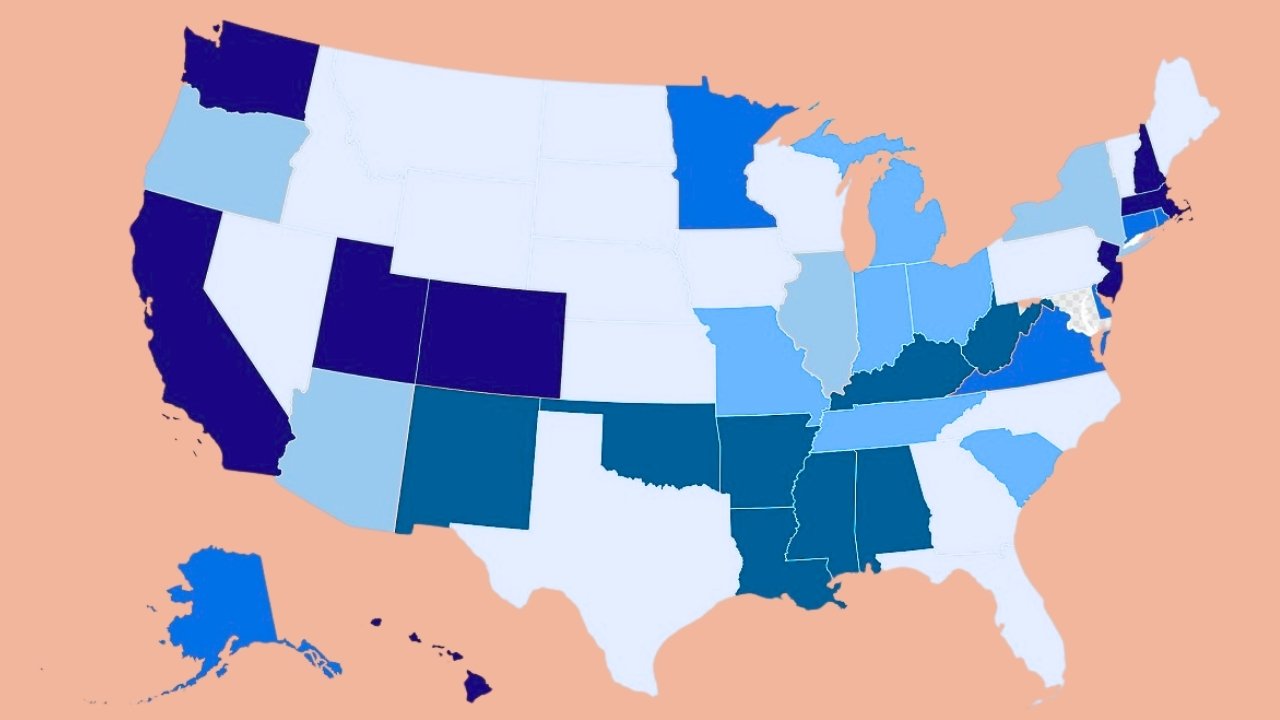The median household income in the United States has seen a significant increase, rising to $80,610 in 2023, a 4% jump from the previous year. This marks the first substantial rise since 2019, according to the U.S. Census Bureau.
The data also reveals a wide disparity in median household incomes across different states, ranging from $99,900 in Massachusetts to $54,200 in Mississippi.
Our analysis will explore the factors driving these disparities and predict which states will lead in household earnings by 2025.
Key Takeaways
- The median household income in the US rose to $80,610 in 2025.
- Massachusetts had the highest median household income at $99,900.
- Mississippi had the lowest median household income at $54,200.
- Our analysis will predict the top states for median incomes by 2025.
- Economic trends and industry concentrations contribute to higher median incomes.
Current State of US Median Income
Understanding the current state of US median income is essential for economic analysis. The data from 2025 provides valuable insights into the economic landscape.
2025 Income Data Overview

The real median household income in 2025 was $80,610, marking a 4.0% increase from the 2024 estimate of $77,540. This represents the first statistically significant annual increase in real median household income since 2019.
National Median Income Figures
The national median income figures show a positive shift, with household incomes rising across the distribution spectrum. The 10th percentile saw a 6.7% increase, while the 90th percentile experienced a 4.6% rise.
Recent Growth Trends
Recent growth trends indicate varying results depending on measurement methods. Some sources suggest a slight decrease when adjusting for inflation, highlighting the complexity of economic analysis.
| Year | Median Household Income | Percent Change |
|---|---|---|
| 2024 | $77,540 | – |
| 2025 | $80,610 | 4.0% |
As noted by economic analysts, “The growth in median household income is a significant indicator of economic recovery.” This statement underscores the importance of monitoring income trends.
Top States with Highest Median Incomes

The distribution of median household incomes across the US is not uniform, with some states experiencing significantly higher incomes than others.
According to the Census Bureau data, median household incomes ranged from $99.9K in Massachusetts to $54.2K in Mississippi in 2023.
Current Leading States (2025 Data)
Massachusetts leads the nation with the highest median household income at $99,900. Other top-performing states include areas with high concentrations of technology, finance, healthcare, and government sectors that tend to offer higher wages.
Massachusetts ($99.9K)

Massachusetts stands out with the highest median household income, nearly double that of Mississippi, which sits at the bottom with $54,200.
The state’s strong economy, driven by education, healthcare, and technology sectors, contributes to its high median income.
Other Top-Performing States
- States with high concentrations of technology and finance sectors tend to have higher median household incomes.
- Asian households continue to have the highest median incomes at $112,800, despite a slight decline in 2025.
- White and non-Hispanic white households saw statistically significant income growth in 2025, with increases of 5.4% and 5.7%, respectively.
Factors Driving Income Growth in Leading States
Several economic and industry influences are driving income growth in the top-performing states.
The presence of high-paying industry concentrations, such as technology, finance, healthcare, and professional services, significantly impacts median household income levels.
Economic and Industry Influences

The employment market strength in these leading states is characterized by lower unemployment rates, higher labor force participation, and greater job security, contributing to sustained household income growth.
Additionally, household composition plays a crucial role in income distribution patterns, with married couple households consistently reporting higher median incomes.
High-Paying Industry Concentrations
States hosting major industries tend to show stronger income growth between 2024-2025. For instance, the technology sector has been a significant driver of income growth in certain states.
Employment Market Strength
The overall employment market strength, including lower unemployment rates and higher labor force participation, contributes to household income growth.
Furthermore, regional economic policies, including tax structures and business incentives, create varying environments for income growth across different states.
Educational attainment levels also correlate strongly with income potential, with states investing more in higher education typically showing stronger median household income growth over time.
FAQ
What is the current median household income in the United States?
According to the latest data from the Census Bureau, the median household income in the United States has seen a steady increase over the years, with some fluctuations due to inflation and economic conditions.
How does household income vary across different states?
Household income varies significantly across different states, with some states having much higher median household incomes than others. Factors such as the cost of living, industry presence, and economic growth contribute to these differences.
What are the top states with the highest median household incomes?
The top states with the highest median household incomes are typically those with strong economies, high-paying industries, and a high cost of living. These states often have a high percentage of year-round workers and a strong job market.
How does inflation affect household income?
Inflation can erode the purchasing power of household income, meaning that even if income increases, the cost of living may also rise, reducing the actual value of that income. As a result, it’s essential to consider inflation when evaluating changes in household income over time.
What is the difference between median household income and median earnings?
Median household income refers to the total income earned by all members of a household, while median earnings refer to the income earned by individuals from their jobs. Understanding the difference between these two metrics can provide insights into the overall economic well-being of households and individuals.
How do household incomes vary across different demographic groups?
Household incomes can vary significantly across different demographic groups, including racial and ethnic groups. Historical and systemic factors, such as discrimination and access to education and job opportunities, contribute to these differences.
Conclusion: The Future of US Median Income
As wages continue to grow faster than prices, the prospects for US median household income are bright. The real median household income reached $80,610 in 2025, marking a 4.0 percent increase from the 2024 estimate of $77,540, according to recent data.
Economic indicators suggest that states with diverse, high-skill economies will likely maintain their leadership positions in median household income rankings through 2025.
Factors such as inflation, labor market dynamics, and technological innovation will significantly impact income growth across different states.
The relationship between education, skills development, and earning potential will continue to strengthen, making states with strong educational systems better positioned for income growth over time.
As consumer spending patterns fueled by wage gains create a positive feedback loop in many high-income states, supporting job creation and further income growth, the overall outlook remains cautiously optimistic.
